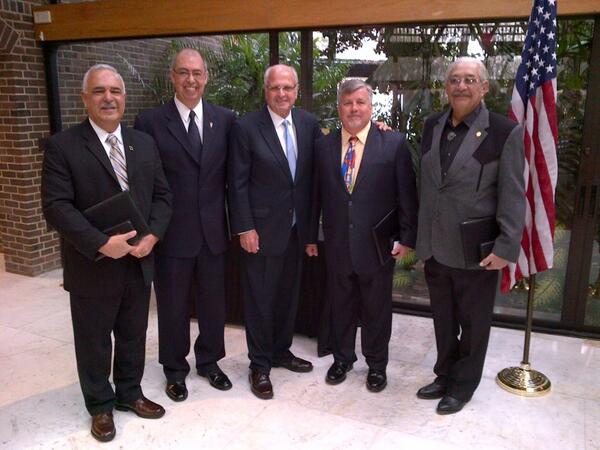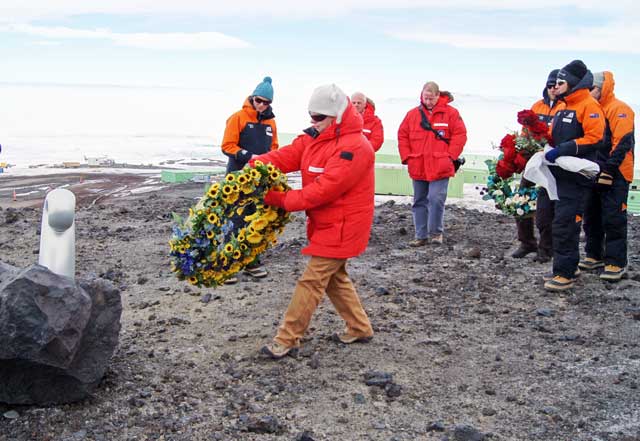|
Heroism not forgottenAdditional U.S. personnel honored for role played in Erebus disaster recovery effortPosted May 2, 2014
Four former U.S. Navy New Zealand’s ambassador to the United States, Mike Moore The medal was instituted in November 2006 to recognize the New Zealanders and citizens of the United States and other countries who helped with Operation Overdue, the mission to recover and identify the remains of the Erebus victims. Air New Zealand Flight 901, an Antarctic sightseeing plane out of Auckland, had lost radio contact at about 1 p.m. on Nov 28, 1979. Twelve hours later, not long after midnight on Nov. 29, a U.S. Navy plane spotted debris on the lower slopes of Mount Erebus Flight 901 had crashed into the side of the volcano and disintegrated. All 257 passengers and crew died, making it the worst national disaster in New Zealand history. About 40 Americans are eligible to receive a medal, according to a New Zealand official quoted in a 2009 Antarctic Sun article about the previous medal ceremony. The New Zealand government, working from leads supplied by the U.S. Navy, was still tracking down potential recipients at the time. A further 10 medals were to be presented or issued separately that year. In late 2012, retired Chief Aviation Electronics Technician Erich Eggers learned that the New Zealand Defence Force was still looking for Americans who had assisted in the recovery effort, according to a Navy Times article The four men who received medals on April 2 included former helicopter pilot Kenneth Becker, search and rescue crewman Robert B. Cox, helicopter crew chief Joseph Madrid and helicopter rescue crewman Hector Rodriguez, according online reports. “Those of a certain generation of New Zealanders will never forget Erebus. We don’t forget those mates who always turn up. You represent the best of New Zealand-American relationships,” Moore was quoted to say during the ceremony. Most of those Americans eligible for the medal were U.S. Navy personnel, which handled most of the logistics for the U.S. Antarctic Program (USAP) The cause of the accident is still debated, though whiteout conditions and alterations to the flight plan likely contributed to the crash. The debris and remains from Flight 901 were found just 1,500 feet above sea level on Erebus, which rises 12,448 feet on Ross Island. The search and rescue party positively identified 213 victims during the recovery operation. The remains of the 44 unidentified people are buried together in Waikumete cemetery in west Auckland. |



For USAP Participants |
For The Public |
For Researchers and EducatorsContact UsNational Science FoundationOffice of Polar Programs Geosciences Directorate 2415 Eisenhower Avenue, Suite W7100 Alexandria, VA 22314 Sign up for the NSF Office of Polar Programs newsletter and events. Feedback Form |



